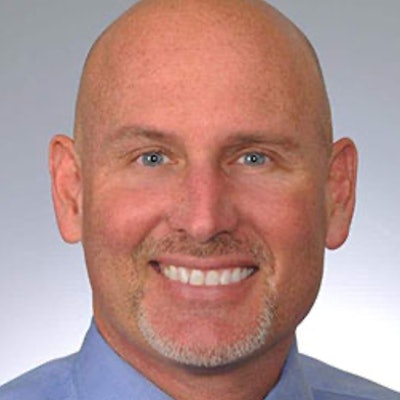
For many people, jaw or neck pain can become a serious problem that interrupts their daily lives. Unfortunately, these same individuals are often in a quandary as to what type of healthcare professional they need.
With the coronavirus pandemic at its peak in many states (at the time of this writing), some healthcare professionals are wary of taking in new patients or any patients at all, and patients who are concerned about COVID-19 aren't getting the help they need until they are literally in the emergency room.
 Brent Wells, DC.
Brent Wells, DC.So what's the best approach for those who have temporomandibular joint (TMJ) pain, neck pain, "mask mouth," or related health issues? The truth is that both dental and medical professionals are helpful when it comes to TMJ syndrome and neck pain.
The temporomandibular joint
The temporomandibular joint is where the lower jawbone meets the skull. This joint is what makes chewing and talking possible. Disorders of this joint (a type of temporomandibular disorder, or TMD) are considered to be a musculoskeletal problem, affecting the joint itself, the surrounding muscles, and the cervical spine.
TMD is one of the most common chronic orofacial pain issues, and it can have a devastating effect on a person's life.
Common symptoms of TMD
When TMD begins, most patients believe they are having some type of dental issue. Common symptoms of TMD include the following:
- Soreness in the jaw or joint, often in the morning
- Teeth pain or sensitivity
- Popping or clicking noises from the jaw
- Worn-down teeth (due to bruxism)
- Ringing in the ears or inner ear pain
- Neck pain
- Headaches
- Pain behind the eyes or in the face, upper back, or shoulders
- Limited mouth mobility
- Locking of the jaw
Because these symptoms mimic other problems, many people start at the dentist. If the dentist doesn't treat TMD, patients are often referred to their primary care physician or another dentist who treats TMD. A possible scenario is that physicians will test for other issues and then send the patient back to the dentist if they cannot find the cause.
This is frustrating for patients, who feel as if they have an unusual problem and no one can help them.
Causes of TMD
Unfortunately, not much is known about the causes of TMD. While some cases can be tied to excessive strain on the joints of the jaw and the muscle group that controls it, at other times, the root cause remains unknown.
Sometimes an injury to the head, neck, or jaw can be linked to TMD. Other causes include displacement of the disk in the jaw joint, arthritis, and fibromyalgia, and even nervous system factors and genetics can play a role in the development of TMD.
Dentist or physical therapist?
In my experience, patients with TMD should see a dentist, a physical therapist, and a chiropractor for the best results.
Many chiropractors include multiple types of therapy to relieve pain and encourage healing, including massage therapy, acupuncture, and/or physical therapy.
My clinics provide physical therapy in Anchorage, AK, as well as massage therapy for those with TMD. I also encourage patients to see their dentist regularly to ensure that dental health is kept at an optimum level and any pain they might be experiencing can be ruled out as dental in nature.
Treatment options will depend on a patient's symptoms if the root cause of the TMD is known, as well as his or her age and overall health.
Dentists will often provide custom-made mouthguards for patients to wear at night to prevent bruxism. This allows the joint to rest and heal as the patient sleeps.
Physical therapists improve jaw movement by using manual therapy to gently increase the range of motion and relieve pain in the joint. Physical therapists can also teach patients exercises that can strengthen the muscles that control the jaw without putting an excessive amount of pressure on them.
What can a chiropractor do for TMD?
Chiropractors can provide significant pain relief by aligning the joints in the jaw, neck, and upper back to prevent pain that can be caused by subluxations.
Because chiropractors are experts in everything musculoskeletal and TMD is a musculoskeletal disorder, seeing an expert in this area makes sense.
Through adjustments and other treatments, a chiropractor can help relieve pain and restore the natural movement of the jaw. If posture is an issue, a chiropractor will show the patient the proper way to sit and stand, which can help prevent or relieve TMJ symptoms.
Your chiropractor can help you with disk problems, misalignment of various joints, and the release of pressure from these joints. He or she can also address any health issues that may be the cause of the problem, such as disk degeneration.
What else can be done?
Studies show that TMD can recur in stressful situations. Patients who experience this might want to engage in regular massage therapy, mediation, and/or yoga.
Massage therapy has been shown to be an easy way to reduce stress, and meditation has been shown to reduce stress and also pain levels without medication. Yoga is also a great way to remain flexible and reduce stress.
The bottom line
At the end of the day, no one wants to live in pain. By staying in close contact with a dental professional, a chiropractor, and a physical therapist, many patients with TMD can reduce pain and bruxism, as well as reduce overall stress levels.
Brent Wells, DC, founded Better Health Chiropractic Anchorage and has been a chiropractor for more than 20 years. His practice has treated thousands of patients for different health problems through chiropractic care designed to give long-lasting relief.
The comments and observations expressed herein do not necessarily reflect the opinions of DrBicuspid.com, nor should they be construed as an endorsement or admonishment of any particular idea, vendor, or organization.





_20210915215445.png?auto=format%2Ccompress&fit=crop&h=167&q=70&w=250)













